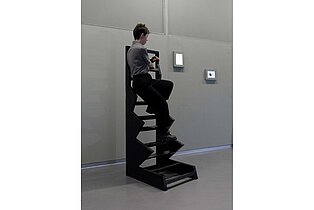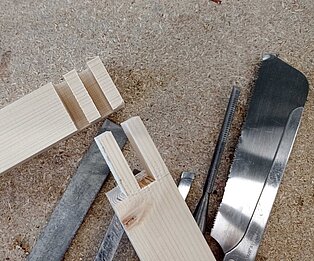Interior Scholarship | Blog 03 | Eff Libilbéhéty [english]
Humans are biological, living organisms characterized by common features (bipedal, ritualistic, opposable thumbs, an instinctive need to belong to a group). Inside of this envelope exists the psychological, the subjective and a peculiar component: the self. There is a lot of pressure on individuals to conform to a group, and it often results in the fragmentation of the self. We try to cope with such friction by using various social appendages, like mobile phones, coping mechanisms, or other kinds of social strategies.
Cognitive biases (glitches of the human brain) are universal tools used by humans to lubricate their collision with the external world. They are shortcuts that condense our experience of reality, to make it clear and digestible. Biases are commonly shared identities that reveal just how fragile the balance is between “the individual” (self) and “the collective” (selves).
In a dialectic between the psychologically constructed and the human-built, various biases are accentuated, highlighted and displayed. This work presents skeletons of the mental human which arise from differing cognitive and perceptual standpoints. Chairs, much like biases, are so commonplace and banal that we don’t even think about relying on them. By burning wood, the banal exterior (bias) is removed and the carnal (the individual) is revealed. These objects ultimately are prosthetics of the cognitive sensoriality of the Homo sapien.
Where do we belong?
I started around the idea of belonging. Belonging to someone, somewhere, having belongings. Very quickly my research became about the tension between the individual and the collective.
How can an identity be full if it has to play within the standards and norms of the group it tries to fit? What is subjective?
I first differentiate this two part of us, the subjective and the universal one. The human is a biological and living organism, characterized by the following distinctive features : bipedal, opposable thumbs and an instinctive need for belonging. The self is the psychological and subjective component of the human (hosted by the physical body). It is unique to each individual of the species. Now, what could represent this intricate relationship between these two entities, the human and the self?
I realize the solution would come from cognitive capitalism, something mental. Cognition is the ability to perceive and react, encounting thought, behavior and emotions. The brain and mind are the new factories of the twenty-first century. ‘We are no longer proletarians working on assembly lines, but cognitarians generating behavioural data that is bought and sold on futures markets’ (Zuboff, 2019).
Chairs and the human brain
Here we are! You, I, are a very mechanical machine using preset settings that provokes peculiar reactions.
Today, I would like to introduce you to yourself, and more specifically to your biases. Cognitive biases are shortcuts of the brain. They are here to help us to make sense of the world. Let’s say, when you cook pasta you don’t weight your pasta and your tomate sauce every time. No, because we work in heuristics, so we do approximation and it often works. It is the same here. The brain saves energy by engaging in an automatic answer to a stimulus of informations, without analyzing it. The interesting thing about it is that we all have the same biases, like a commonly shared identity. They are an evolution tools that made us where we are, even tho today there are not always adapted. They show all the fragility of the universal human but meanwhile emphasizes each self as authentic.
I studied biases that seemed to show the limit of the human in its identity or in its collectivity. For example, one bias is called moral credential. It states that when you’ve been good, you allow yourself to be less good afterward. I wanted to show the rituals the body does for each bias, as an attempt to make physical a cognitive process. That is why I did chairs, because our bodies rely on them the same way the brain relies on biases.
The banality of the chair and the influence in the way we have a conversation, the chair as a controlling object, full of standards. The chair, at the end, suggests the body even if there is none seated on it. And finally, the chair as the symbole of the 2021 rooted human. The modern human is seated, when they eat, are in public transport, take a shit, work, chill on the computer. The chair, as the biases, is a prosthetic to the human, an extension of the human that intent and define how one relate to another.
A chair for my ass and a chair for my thoughts.
These chairs aren't the archetypical object we imagine but spaces for the body. You can’t just sit, you need to think of how you’re going to engage with it. It’s continuous effort. First, I translated each bias into a body ritual, because I wanted the bias to be understood by using the chair and not by seeing it. Then, I studied and filmed how this ritual would be in dialogue with a chair.
For it to loose its status of furniture, I burned the chairs and worked on a specific texture that would recall the skin, the carnal. The act of burning is destruction but also rebirth. The burn is a natural protection, again, as the biases. I only used construction beams because I wanted it to be only a structure. The plan here are beams planed and glued together, to make no difference between the seat and the foot for example. These chairs are skeleton of the mental human.
These chairs are united by their functions, to simulate the sensorium of a single person.
This room is simply an archive of human minds.





















